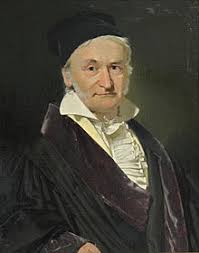class: center, middle, inverse, title-slide # Week 11 - Probability ## Random Variables and Probability Distributions <html> <div style="float:left"> </div> <hr color='#EB811B' size=1px width=800px> </html> ### Danilo Freire ### 8 April 2019 --- <style> .remark-slide-number { position: inherit; } .remark-slide-number .progress-bar-container { position: absolute; bottom: 0; height: 6px; display: block; left: 0; right: 0; } .remark-slide-number .progress-bar { height: 100%; background-color: #EB811B; } .orange { color: #EB811B; } </style> # Today's Agenda .font150[ * Random variables * Binomial and normal distributions * Expectation and variance ] --- # Random Variables .font130[ * What is a random variable? We assign a number to an event - Coin flip: tail = 0; heads = 1 - Senate election: Ted Cruz = 0; Beto O'Rourke = 1 - Voting: vote = 1; not vote = 0 * The values of random variables must represent _mutually exclusive and exhaustive events_ * Probability distribution: Probability that a random variable takes a certain value - P(coin = 1); P(coin = 0) - P(election = 1); P(election = 0) ] --- # Random Variables and Probability Distributions .font130[ * .orange[Probability density function (PDF):] `\(f(x)\)` - Probability that a random variable `\(X\)` takes a particular value. - Associated with continuous variables, must be integrated over an interval * .orange[Probability mass function (PMF):] when `\(X\)` is discrete, `\(f(x) = P(X = x)\)`. Only discrete random variables have PMFs * .orange[Cumulative distribution function (CDF):] `\(f(x) = P(X \leq x)\)` - What is the probability that a random variable `\(X\)` takes a value equal to or less than `\(x\)`? - Area under the density curve (we use `\(\sum\)` or `\(\int\)`) ] --- class: inverse, center, middle # Binomial Distribution <html><div style='float:left'></div><hr color='#EB811B' size=1px width=720px></html> --- # Binomial / Bernoulli Distribution .font150[ * The binomial distribution shows the number of successes in repeated trials * It is also known as the Bernoulli distribution .center[] ] --- # Binomial Distribution .font150[ * .orange[PMF:] for `\(x \in \{0, 1, \dots, n\}\)`, `$$f(x) \ = \ P(X = x) \ = \ {n \choose x} p^x (1-p)^{n-x}$$` * .orange[PMF] tells us what is the probability of `\(x\)` _successes_ given `\(n\)` trials with with `\(P(x) = p\)` * In `R`: ```r # prob of 2 successes in 4 trials dbinom(2, size = 4, prob = 0.5) ``` ``` ## [1] 0.375 ``` ] --- # Binomial Distribution .font150[ * .orange[CDF:] for `\(x \in \{0, 1, \dots, n\}\)` `$$f(x) \ = \ P(X \le x) \ = \ \sum_{k = 0}^x {n\choose k} p^k (1-p)^{n-k}$$` * .orange[CDF] tells us what is the probability of _x or fewer successes_ given `\(n\)` trials with `\(P(x) = p\)` * In `R`: ```r # prob of 2 or fewer (= 0,1,2) successes in 4 trials pbinom(2, size = 4, prob = 0.1) ``` ``` ## [1] 0.9963 ``` ] --- # PMF and CDF .font150[ * CDF of `\(F(x)\)` is equal to the sum of the results from calculating the PMF for all values smaller and equal to `\(x\)` * In `R` ```r pbinom(2, size = 4, prob = 0.1) # CDF ``` ``` ## [1] 0.9963 ``` ```r sum(dbinom(c(0, 1, 2), 4, 0.1)) # summing up the PDFs ``` ``` ## [1] 0.9963 ``` ] --- # Binomial Distribution .font150[ * Example: flip a fair coin 3 times `$$f(x) \ = \ P(X = x) \ = \ {n \choose x} p^x (1-p)^{n-x}$$` `$$f(x) \ = \ P(X = 1) \ = \ {3 \choose 1} 0.5^1 (1-0.5)^{3-1} = 0.375$$` ```r dbinom(1, 3, 0.5) ``` ``` ## [1] 0.375 ``` ] --- # Binomial Distribution .font120[ ```r x <- 0:3 barplot(dbinom(x, size = 3, prob = 0.5), ylim = c(0, 0.4), names.arg = x, xlab = "x", ylab = "Density", main = "Probability mass function") ``` <img src="week11a_files/figure-html/binom05-1.png" style="display: block; margin: auto;" /> ] --- # Binomial Distribution .font120[ ```r x <- -1:4 pb <- pbinom(x, size = 3, prob = 0.5) plot(x[1:2], rep(pb[1], 2), ylim = c(0, 1), type = "s", xlim = c(-1, 4), xlab = "x",ylab = "Probability", main = "Cumulative distribution function") for (i in 2:(length(x)-1)) { lines(x[i:(i+1)], rep(pb[i], 2)) } points(x[2:(length(x)-1)], pb[2:(length(x)-1)], pch = 19) points(x[2:(length(x)-1)], pb[1:(length(x)-2)]) ``` ] --- # Binomial Distribution .font120[ <img src="week11a_files/figure-html/binom07-1.png" style="display: block; margin: auto;" /> ] --- class: inverse, center, middle # Normal Distribution <html><div style='float:left'></div><hr color='#EB811B' size=1px width=720px></html> --- # Normal Distribution .font150[ * The .orange[normal distribution] is also called the .orange[Gaussian distribution] .center[] ] --- # Normal Distribution .font150[ * Takes on values from `\(-\infty\)` to `\(\infty\)` * Defined by two parameters: `\(\mu\)` and `\(\sigma^2\)` - Mean and variance (standard deviation squared) * Mean defines the location of the distribution * Variance defines the spread ] --- # Normal Distribution .font150[ * .orange[Normal distribution] with mean `\(\mu\)` and standard deviation `\(\sigma\)` * .orange[PDF:] `\(f(x) \ = \ \frac{1}{\sqrt{2\pi} \sigma}\exp\left(-\frac{(x - \mu)^2}{2\sigma^2}\right)\)` * In `R`: ```r # prob of x = 2 with a normally-distributed variable # with mean = 4 and standard deviation = 3 dnorm(2, mean = 4, sd = 3) ``` ``` ## [1] 0.1064827 ``` ] --- # Normal Distribution .font150[ * .orange[CDF:] `\(F(x) \ = \ P(X \le x) \ = \ \int_{-\infty}^x \frac{1}{\sqrt{2\pi}\sigma}\exp\left(-\frac{(t - \mu)^2}{2\sigma^2}\right) dt\)` * Use `R` to compute it * What will be `\(F(x = 2)\)` for `\(\mathcal{N}(2,4)\)`? ```r pnorm(2, mean = 2, sd = 4) ``` ``` ## [1] 0.5 ``` ] --- # Normal Distribution .font150[ * Normal distribution is symmetric around the mean * Mean = Median ] --- # Normal Distribution .font150[ ```r # Different types of normal distributions x <- seq(from = -7, to = 7, by = 0.01) plot(x, dnorm(x), xlab = "x", ylab = "density", type = "l",main = "Probability density function", ylim = c(0, 0.9)) lines(x, dnorm(x, sd = 2), col = "red") lines(x, dnorm(x, mean = 1, sd = 0.5), col = "blue") ``` ] --- # Normal Distribution .font150[ <img src="week11a_files/figure-html/norm04-1.png" style="display: block; margin: auto;" /> ] --- # Normal Distribution .font150[ * Curve of .orange[any] normal distribution: * Symmetric around the mean * Total area under the curve is 100% * Area between -1SD and +1SD is ~68% * Area between -2SD and +2SD is ~95% * Area between -3SD and +3SD is ~99.7% ] --- # Normal Distribution .font150[ ```r x <- seq(from = -7, to = 7, by = 0.01) lwd <- 1.5 plot(x, dnorm(x), xlab = "x", ylab = "density", type = "l",main = "Probability density function", ylim = c(0, 0.9)) abline(v = -1, col = "red") abline(v = 1, col = "red") abline(v = -2, col = "blue") abline(v = 2, col = "blue") abline(v = -3, col = "black") abline(v = 3, col = "black") ``` ] --- # Normal Distribution .font150[ <img src="week11a_files/figure-html/norm06-1.png" style="display: block; margin: auto;" /> ] --- # Expectations, Means, and Variances .font150[ * For probability distributions, means _should not be confused with sample means_ * Expectations or means of a random variable have specific meaning for the probability distribution ] --- # Means and Expectation .font150[ * A sample mean varies from sample to sample * Mean of a probability distribution is a theoretical construct and constant * Example: Age of undergraduate body at Brown ] --- # Means and Expectation .font150[ * The expectation of a random variable is equal to the sum of all possibilities weighted by the probabilities * Example: expectation of rolling one die `$$\mathbb{E}(X) = \frac{1}{6} \times 1 + \frac{1}{6} \times 2 + \frac{1}{6} \times 3 + \frac{1}{6} \times 4 \frac{1}{6} \times 5 \frac{1}{6} \times 6$$` `$$\mathbb{E}(X)= 3.5$$`] -- .font150[ * Note that this is .orange[not a possible value!] * `\(\mathbb{E}(X)\)` is the _theoretical mean_ based on the _distribution_ of the variable, not its sample mean ] --- # Means and Expectation .font150[ * What is `\(\mathbb{E}(X)\)` for the number of heads in 100 coin flips? ] -- .font150[ `$$\mathbb{E}(X) = 0.5\times 1 + 0.5\times 1+ ... + 0.5\times 1 = 0.5*100 = 50$$` ] --- # Variance .font150[ * Variance is standard deviation squared = `\(\sigma^2\)` * `\(\mathbb{V}(X)\)` is the difference between the expectation of `\(X^2\)` and the expectation of `\(X\)` * `\(\mathbb{V}(X) = \mathbb{E}[\{X - \mathbb{E}(X)\}^2]\)` * Variance in a probability distribution indicates how much uncertainty exists * Like `\(\mathbb{E}(X)\)`, `\(\mathbb{V}(X)\)` is a theoretical construct, not exactly the sample variance ] --- class: inverse, center, middle # See you on Wednesday! <html><div style='float:left'></div><hr color='#EB811B' size=1px width=720px></html>